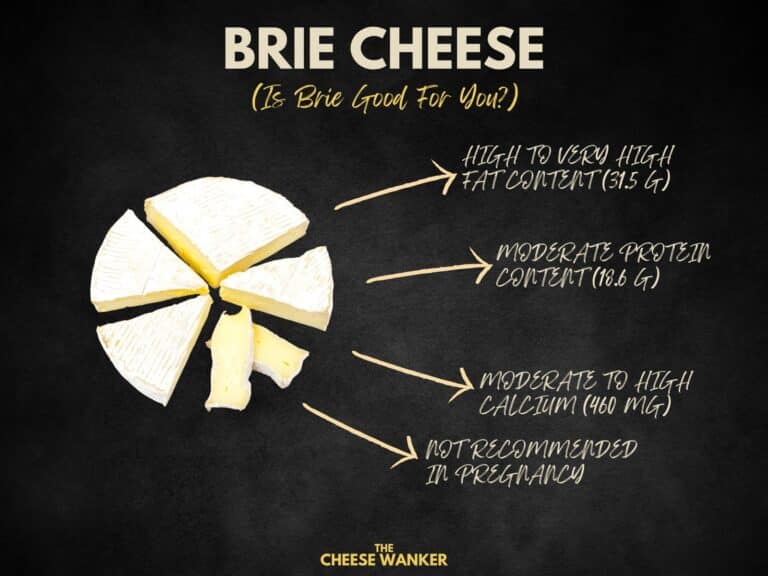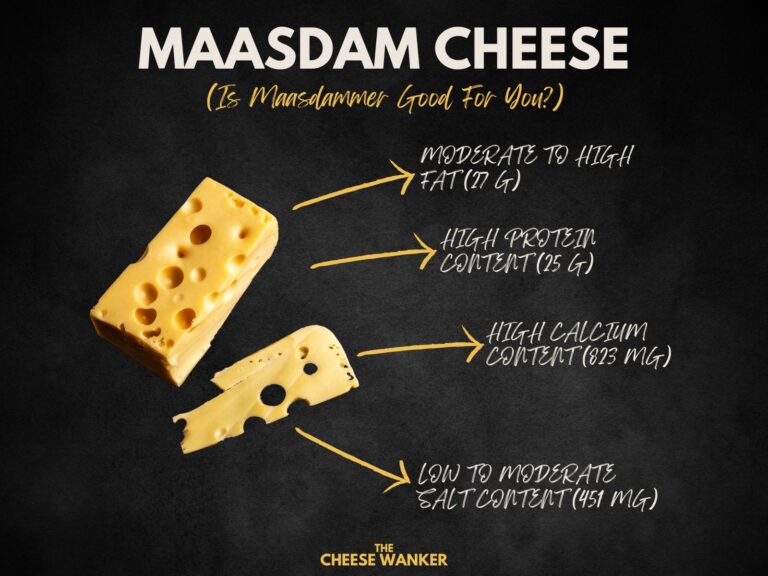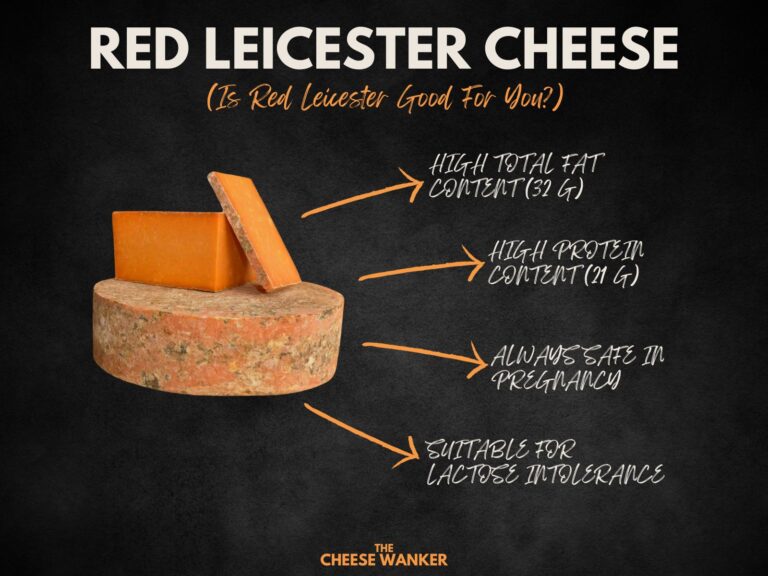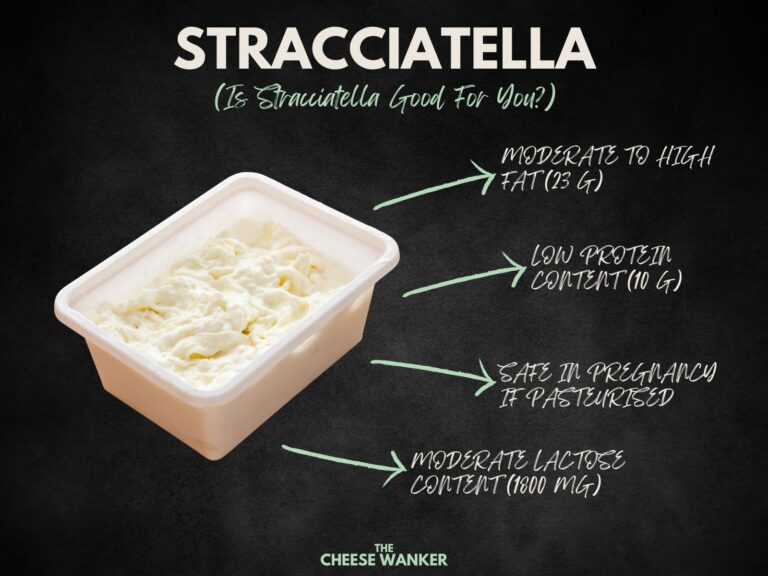There are very few foods that take me back to my childhood the way La Vache Qui Rit does. Also known as The Laughing Cow among anglophones, this commercial French spread was the ultimate spread on a warm crunchy baguette. But is it healthy? Read on to discover the nutrition facts for The Laughing Cow.
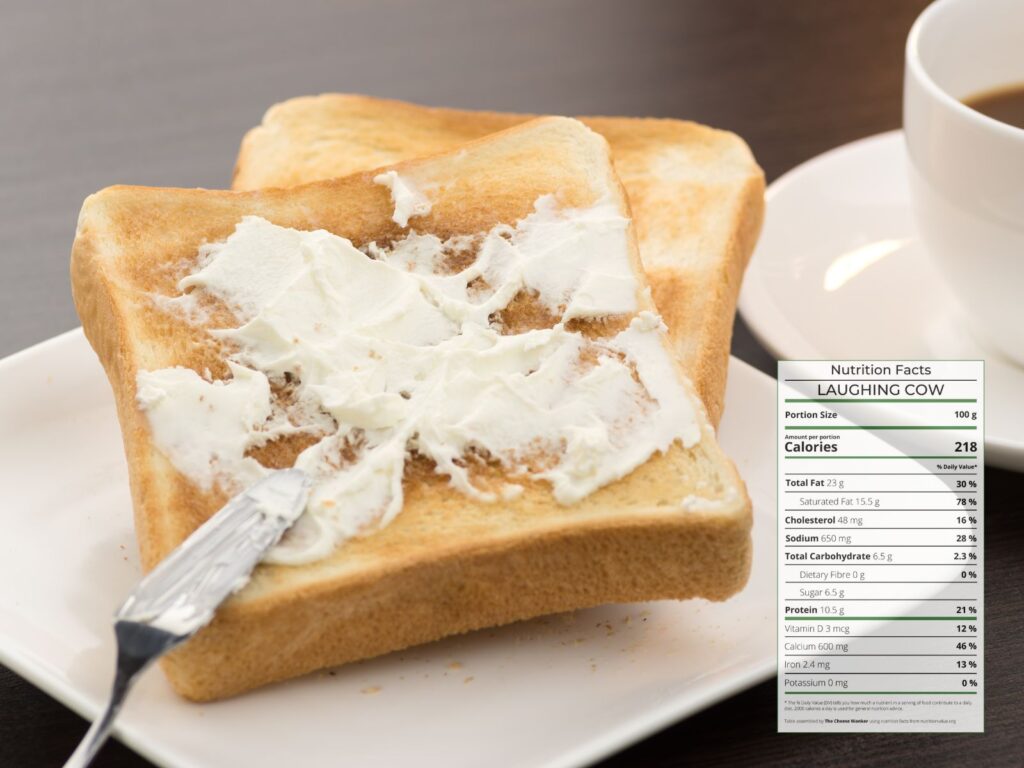
SEE ALSO: Nutrition facts for popular world cheeses in The Cheese Wanker’s index →
What type of cheese is Laughing Cow?
The Laughing Cow is a well-known brand of cheese, particularly famous for its creamy and spreadable cheese wedges. Similar to Boursin, The Laughing Cow cheese is a processed cheese product that comes in a round packaging with individual foil-wrapped wedges.
The cheese is smooth, soft and easy to spread, making it a popular choice for snacks and appetizers. It’s often enjoyed with crackers, bread or fresh vegetables. The brand was created by Léon Bel in France in 1921. The iconic logo features a cheerful cow and reflects the brand’s light-hearted and playful image.
Over the years, The Laughing Cow cheese has become a beloved snack option around the world due to its convenient packaging and creamy texture.
Nutrition fact sheet
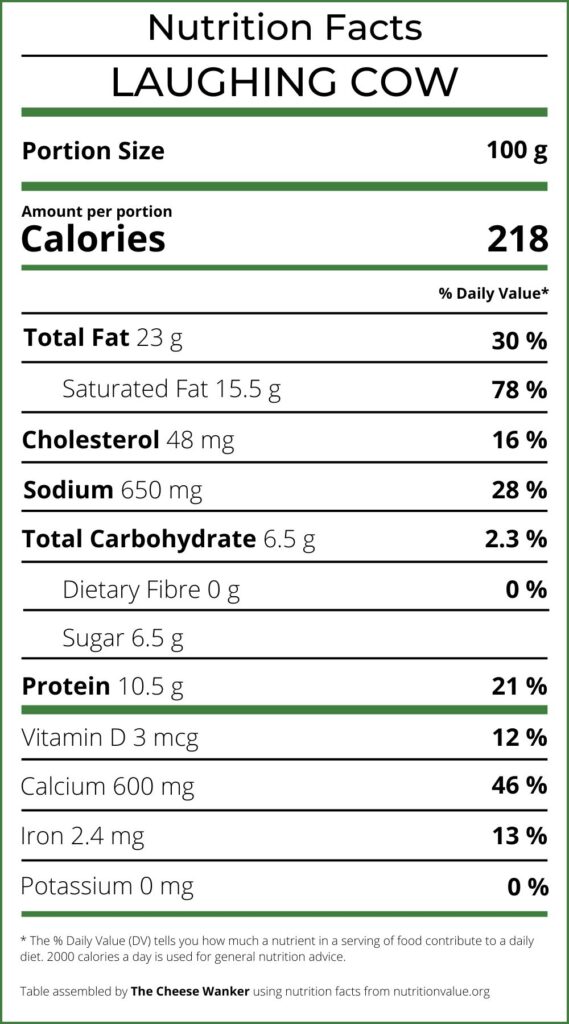
Country of origin
France
Type of Cheese
Cheese-Based Product (Not actually cheese)
Milk
Cow
Examples
La Vache Qui Rit, Light, Lactose Free, Flavoured (Red Bean, Chickpea, Lentil, Garlic & Herbs)
Safe
Avoid
Milk Protein Intolerance, Lactose Intolerance, Low Sodium Diet
Nutrition Facts Summary for The Laughing Cow
Due to its high fat and low carbohydrate contents, The Laughing Cow is a great option for people following a ketogenic diet. Moreover, it is made with pasteurised cow’s milk. This fact, combined with its lack of rind, make The Laughing Cow safe to eat during pregnancy.
However, La Vache Qui Rit is high in moisture and relatively high in lactose. As such, the regular versions of this cheese-based product should be avoided by lactose intolerant cheese lovers. Having said that, you can buy a lactose free version of The Laughing Cow.
References
Nutritional Content
The nutritional content of cheese in our table comes from the USDA Food Data Central Repository and cheese manufacturers. We realise that there can be variations between different brands and producers. Hence, the numbers we have used are averages.
Fat
Our fat RDI data comes from Cleveland Clinic’s Healthy Fat Intake resource.
Type of fat in cheese as per Harvard T.H. Chan’s The Nutrition Source.
Protein
Our protein RDI data comes from Harvard Medical School’s Harvard Health Publishing.
Cholesterol
Is There a Correlation between Dietary and Blood Cholesterol? Evidence from Epidemiological Data and Clinical Interventions? – Maria Luz Fernandez and Ana Gabriela Murillo
Saturated fat, carbohydrate, and cardiovascular disease – Patty W Siri-Tarino, Qi Sun, Frank B Hu and Ronald M Krauss
Effect of cheese consumption on blood lipids: a systematic review and meta-analysis of randomized controlled trials – Janette de Goede, Johanna M Geleijnse, Eric L Ding, Sabita S Soedamah-Muthu
Safety in Pregnancy
All the advice relating to what cheeses you can eat during pregnancy in this article is based on the recommendations by health authorities in Australia, the UK and the USA. If you are unsure about what you can or cannot eat, please consult your doctor.
Australia – FSANZ, United Kingdom – NHS and United Sates of America – FDA
Lactose Content
Lactose residual content in PDO cheeses
Detection of lactose in products with low lactose content
The analysis of lactose in milk and cheese products by HPLC
Food Standards ANZ Food Composition Database
Lactose & Galactose content of cheese
